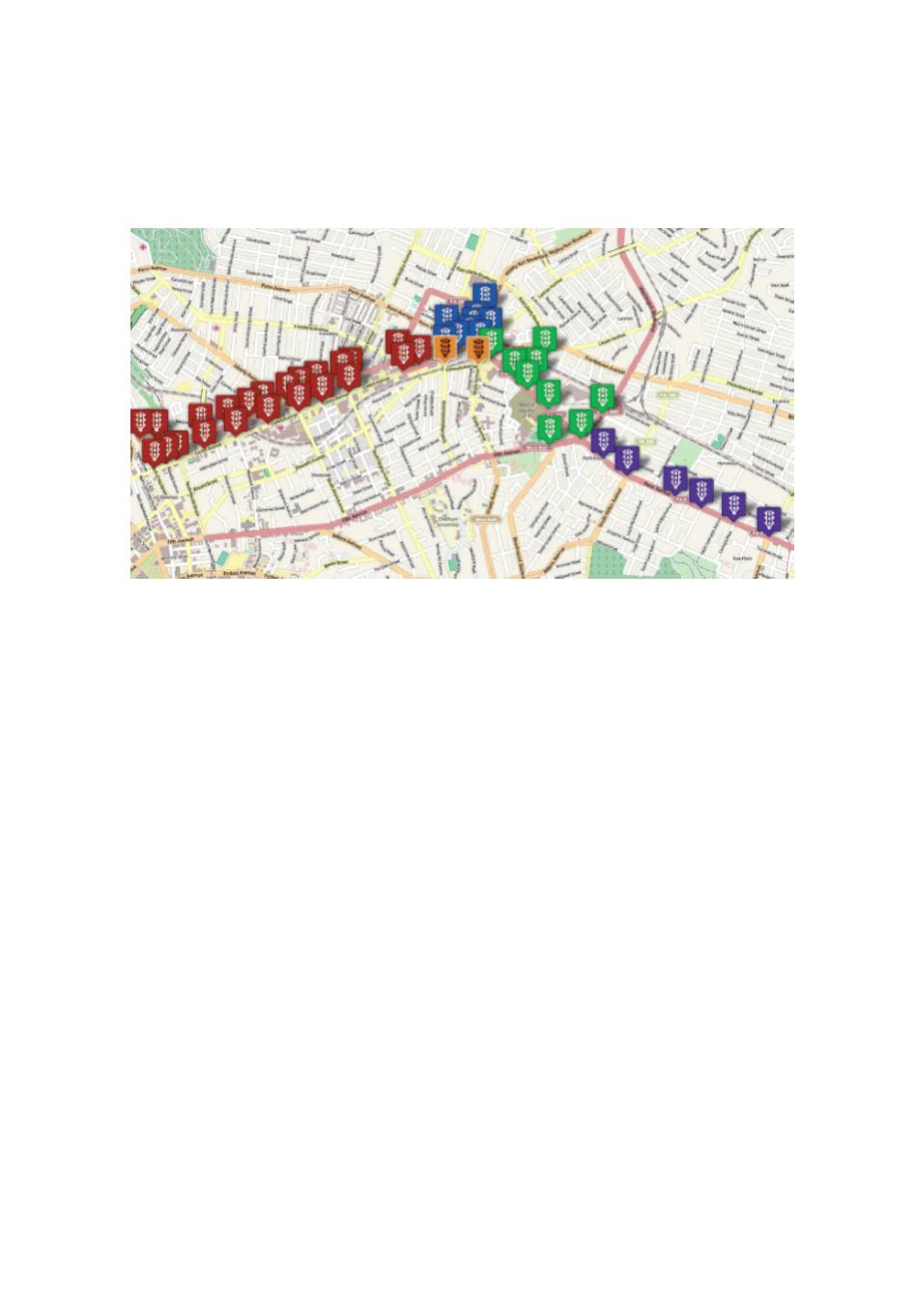

179
on nine intersections in the East Liberty neighbourhood. SURTRAC reduced travel
times by more than 25% on average and wait times were reduced by 40% on average.
The same system was deployed in Baker Square district as a second phase and it has been
running since October 2013. [23]
Figure 7.13 SURTRAC system in Pittsburgh intersections [23]
2. Sydney, Australia
The city of Sydney uses SCATS (see Figure 7.14), or Sydney Coordinated Adaptive
Traffic System, as an ITS developed in Sydney, Australia. It is considered to be a worldwide
market leader in ITS. Using sensors (usually inductive loops under the road for cars and
push buttons for pedestrians), this system detects the presence of cars at each traffic
signal, lane and pedestrians who are trying to cross. Thus, it can calculate and adapt
the timing of signals. This system spread quickly all over the country, mainly to major
cities like Melbourne, Adelaide (1982) and in 1983 to Perth. Today SCATS, or some of
its similar versions are also used in New Zealand, Hong Kong, Shanghai, Guangzhou,
Tehran, Dublin, Rzeszow, Gdynia and soon in part of Metro Atlanta (see Figure 7.15).
The system may be referred to by an alternative name in a specific installation (except
Sydney), although since deployment beyond Australia, New Zealand and Singapore,
these localised names do not appear to be commonly used. [22]
















